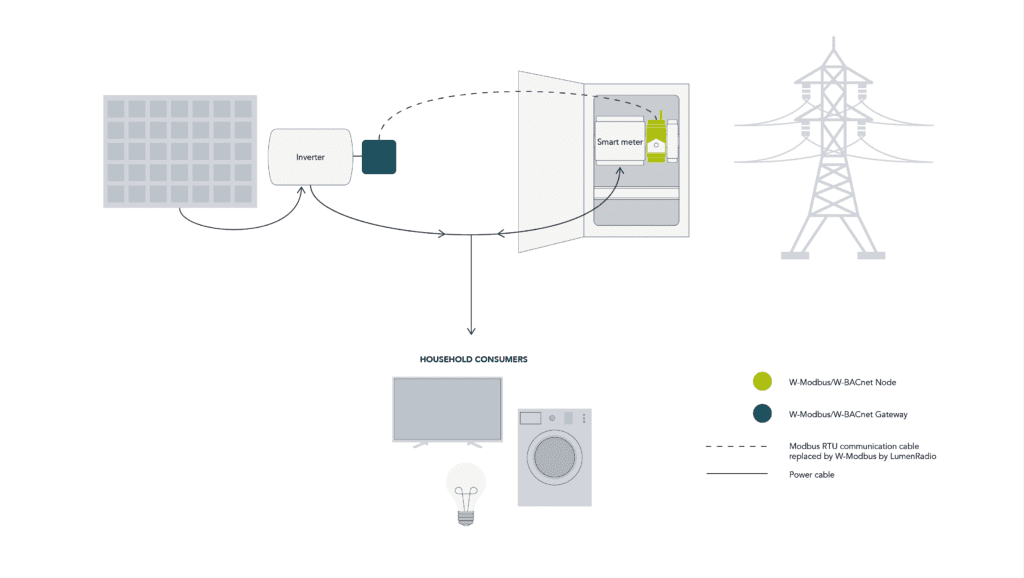Introducing the wireless revolution in solar installation
The solar energy sector has been witnessing rapid growth with global installations of photovoltaic (PV) systems expected to rise by over 50% in 2023. This expansion creates a need for more efficient and streamlined solar installation services.
Here wireless Modbus technology has emerged as a promising solution. By replacing the traditional Modbus cable, wireless Modbus eliminates time-consuming installation processes, offers easier retrofitting options, and simplifies troubleshooting.
In this article, we will explore the benefits of wireless Modbus for solar installations and highlight how it is revolutionizing the industry.
What is wireless Modbus?
Wireless Modbus is a groundbreaking technology that replaces traditional Modbus cabling with a wireless communication system.
LumenRadio’s Wireless Modbus, based on its MiraMesh core technology platform, offers ultra-reliable data transfer, extended network range, and mesh functionality. It allows for easy commissioning and provides significant value to both new and existing installations.
Advantages of wireless Modbus for solar installations
Extended range and mesh functionality
With a line-of-sight range of over 500 meters between two nodes and the capability to have up to 8 hops in a mesh network, Wireless Modbus can cover vast areas without any data loss. This extended range enables seamless connectivity between different devices in large-scale solar installations.
Compatibility and flexibility
Wireless Modbus is a pure cable replacement solution that is agnostic towards different device baud rates. It can connect up to 100 devices to a single Modbus controller, making it highly compatible and flexible for various applications.

Easy installation and troubleshooting
By eliminating the need for cabling, wireless Modbus significantly reduces installation time and effort. Moreover, troubleshooting becomes much simpler, as technicians no longer need to inspect every cable for potential issues.
Retrofitting and scalability
Wireless Modbus enables the effortless addition of devices to an existing network or the conversion of a wired installation to a wireless one. This makes it an ideal solution for retrofitting and scaling up solar installations.
Cost-effectiveness
By avoiding time-consuming cabling and reducing maintenance and troubleshooting efforts, wireless Modbus can lead to significant cost savings for solar installations.
Real-world applications of wireless Modbus in solar installations

1) Inter-building connectivity
Wireless Modbus can be used to connect an inverter in one building to a data logger in another, eliminating the need for extensive cabling between buildings.
2) Minimal infrastructure disruption
When installing solar systems, there may be instances when digging up roads or other infrastructure is necessary to access power meters or control rooms. Wireless Modbus can help avoid such disruptions by establishing wireless connections across these distances.
3) Improved maintenance monitoring
Wireless Modbus can facilitate the addition of sensors for enhanced maintenance monitoring, enabling more efficient and proactive system management.
Summary
Wireless Modbus technology is poised to revolutionize the solar installation industry by offering a range of benefits, including:
- extended network range
- ease of installation
- simplified troubleshooting
- cost-effectiveness
As the demand for solar energy continues to grow, wireless Modbus is set to become an indispensable tool for installers and system operators, contributing to more efficient and sustainable solar installations worldwide.




